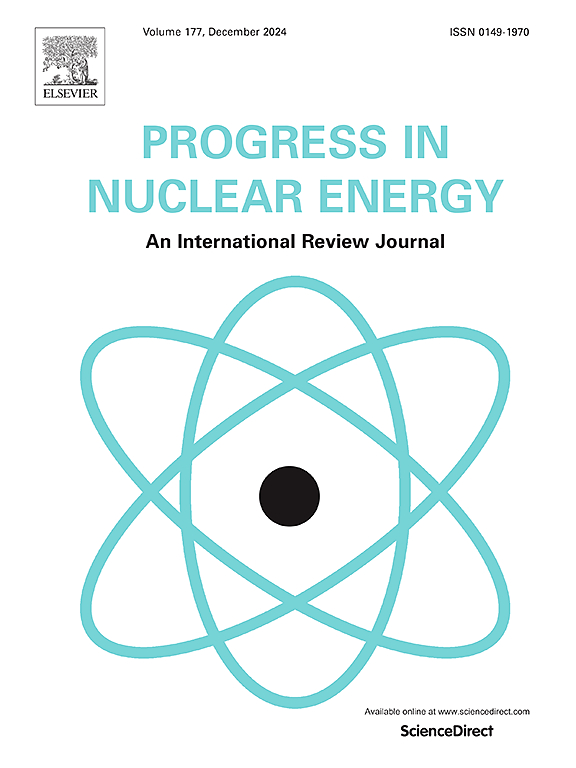Development and steady-state validation of the fine sub-channel thermal-hydraulic code CUNLUN
IF 3.3
3区 工程技术
Q1 NUCLEAR SCIENCE & TECHNOLOGY
引用次数: 0
Abstract
This paper, based on the flow characteristics of coolant between channels in a pressurized water reactor (PWR), proposes a reactor core sub-channel calculation and analysis method that utilizes fine sub-channel control volumes. A three-dimensional momentum source resistance model for mixing vanes was established based on the distributed resistance method. Using the C++ programming language, a PWR reactor core thermal-hydraulic calculation and analysis program called CUNLUN was independently developed based on this method. Numerical simulations were conducted using the Westinghouse 5 × 5 rod bundle experiment and the OECD/NEA MATiS-H international benchmark experiment. The maximum relative error for the Westinghouse 5 × 5 rod bundle experiment was 6.73%, and the simulation results for the MATiS-H benchmark experiment also agreed well with experimental data, demonstrating that this program can improve the accuracy of predicting flow characteristics within the sub-channels of a PWR reactor core. Additionally, Computational Fluid Dynamics (CFD) simulation data were used as benchmark data, and in 112 comparison points, the average calculation accuracy of 102 comparison points improved by 74.21%, verifying the applicability and validity of the three-dimensional momentum source resistance model for mixing vanes based on the distributed resistance method for the CUNLUN code. This code provides an effective design and research tool for thermal-hydraulic analysis of PWR fuel assemblies and offers valuable insights for the development of reactor core thermal-hydraulic analysis programs.
求助全文
约1分钟内获得全文
求助全文
来源期刊

Progress in Nuclear Energy
工程技术-核科学技术
CiteScore
5.30
自引率
14.80%
发文量
331
审稿时长
3.5 months
期刊介绍:
Progress in Nuclear Energy is an international review journal covering all aspects of nuclear science and engineering. In keeping with the maturity of nuclear power, articles on safety, siting and environmental problems are encouraged, as are those associated with economics and fuel management. However, basic physics and engineering will remain an important aspect of the editorial policy. Articles published are either of a review nature or present new material in more depth. They are aimed at researchers and technically-oriented managers working in the nuclear energy field.
Please note the following:
1) PNE seeks high quality research papers which are medium to long in length. Short research papers should be submitted to the journal Annals in Nuclear Energy.
2) PNE reserves the right to reject papers which are based solely on routine application of computer codes used to produce reactor designs or explain existing reactor phenomena. Such papers, although worthy, are best left as laboratory reports whereas Progress in Nuclear Energy seeks papers of originality, which are archival in nature, in the fields of mathematical and experimental nuclear technology, including fission, fusion (blanket physics, radiation damage), safety, materials aspects, economics, etc.
3) Review papers, which may occasionally be invited, are particularly sought by the journal in these fields.
 求助内容:
求助内容: 应助结果提醒方式:
应助结果提醒方式:


